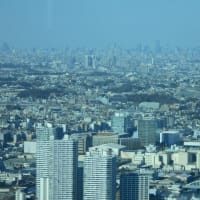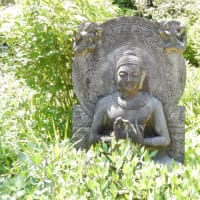
the Meiji Restoration to the present can be called the Tokyo era*1, and it can be said that it was an era in which even greater external forces were exerted than the Black Ships. In all cases, the United States and the United Kingdom*2 were at the center of this. Conversely, it may have been China and Korea*3 that were subject to external forces from Japan. Regarding the Tokyo era, it may be necessary to consider the changes in mentality in the social order, but the influence of external forces (America, England, Korea, China, Russia) has made it extremely complex, making it difficult to see its true nature. 4, I will conclude my discussion of values and the introvert model here, having captured the characteristics of the Japanese psyche in a simple form using the closed model.
*1 Tokyo era
The Tokyo period refers to the era from the Meiji era to the present day. This era is still ongoing. In terms of social order, the Tokyo era may be divided into two. This is because the era is divided into the Meiji Constitution era and the Japanese Constitution era. Looking at social order, it would be problematic to mechanically divide it into four categories within the Meiji system and four categories during the era of the Japanese Constitution. This is because, in Japan's case, the social order was partially forced to change after its defeat in World War II . One thing that can be said consistently from the Meiji era to the Reiwa era is that bureaucrats have ruled. Before the war, the military bureaucracy was also powerful. The difference was that the economic bureaucracy was powerful after the war. In terms of social order, the social order centered on the economic bureaucracy began to grow from about half way through the social order centered on the military, and the social order based on the economic bureaucracy has now passed its maturity stage and is now heading toward decline. It may be the image of Japan. If so, a new social force should have emerged around the time when the economic bureaucracy was at its peak, and in the future it may well be called the ``information bureaucracy.'' The intelligence bureaucracy may not yet have established its organizational base.
*2 America, UK
The most influential external forces were probably the United States and the United Kingdom. With Perry's arrival, Japan was opened to the United States. However, after that, Japan came to rely on Britain's world strategy rather than America's. During the Meiji period, Japan borrowed the best from other Western countries, so it can be said that it was influenced by a plurality of external forces. After World War I, the Anglo-Japanese Alliance ended (continued for 20 years). After that, Japan pursued its own path for a while. After World War II, the United States rested on America's global strategy under the Japan-U.S. Security Treaty. And it continues to this day (continuing for 77 years). The difference between after World War II and after the Meiji Restoration is that after World War II, Japan was overwhelmingly under the influence of the United States. However, that may have happened after the security struggle. The era when Japan followed its own path could be said to be a time when Japan itself had a global strategy, but the values that Japan sought to define were not universal. For this reason, in a sense, the unique era may have been connected to the Edo period in the sense of Japanese people. The way Japan is perceived will change greatly depending on whether one views the Meiji Constitution era and the Japanese Constitution era as two eras of different social orders, or as one continuous social order. In modern times, it may be often seen as two different social orders. However, unconsciously it seems to be a continuous social order. My impression is that this order is reaching its old age, and that the Tokyo era is coming to an end.
※3China, North Korea
Modern Japan is trying to stand between the United States and China, but it can be said that it has been receiving external forces from China and Korea for a long time. However, Japan may have been applying external force to China and Korea for a longer period of time. This was due to the fact that Japan had long been superior to these two regions both militarily and economically, and continued to have influence. That has been changing since the 1990s. China, Taiwan, South Korea, and North Korea have each developed (although North Korea is limited to nuclear forces) and have gradually shifted to influence Japan. In contrast, Japan's social order, as mentioned earlier, is in the old age of the Tokyo era. Among these external forces, Japan is located between the United States and China. From the old age of the Tokyo era, how to build a new social order will become important as an internal value. In terms of external value, it will be important for Japan to link Taiwan and South Korea to its side in line with America's global strategy. I think that propaganda, culture, and religion will also be squeezed out in the same way.
* 4 There is a fear that the true nature of the matter may become invisible.
In order to examine the transformation of introverted values, we have looked at the Edo period as a closed model. In line with this, I have adopted a simple open model that regards the period after the Meiji era as the Tokyo era, and here I have adopted the idea of viewing the Meiji constitutional order and the Japanese constitutional order as one social order. On the other hand, the world strategies of the United Kingdom and the United States have exerted influence on Japan as external forces, and in recent years, as the social order of the Tokyo era has entered the aging process, the external power of China and Korea has increased. I have seen Japan as being caught in the middle. I have briefly described the framework of the open model, but when considering the vitality of Japan's quasi-civilization, I believe that what is more essential is introverted value transformation. For this reason, I would like to put aside the issue of external forces for the time being and think about the future of Japan's quasi-civilization.
All rights reserved to M Ariake



























※コメント投稿者のブログIDはブログ作成者のみに通知されます